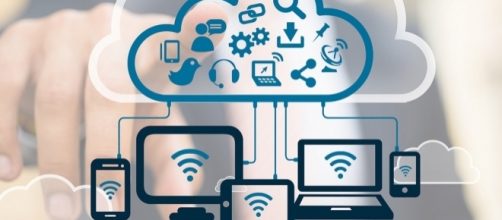In a world where hairbrushes, salt shakers and even trash cans are wirelessly connected, it’s tempting to write off the internet of Things (IoT) as an example of technology run amok. But if you look beyond the zany new gadgets, you will find that major sectors of the world’s industry are taking IoT to heart and building significant platforms around connectivity. The Internet of Things is becoming the Internet of Industry.
Google introduces new IoT technology
As more devices are generating terabytes of data, there is a growing need to be able to rapidly and easily analyze what you have.
Through their cloud services platforms, Amazon and Microsoft have begun providing data management tools and Google joined the party this week with the announcement that they will begin offering the Google IoT Core to set up networks of connected devices more quickly and, hopefully, securely.
Google’s announcement on Tuesday came as the Internet of Things World 2017 conference and exposition kicked off this week in Santa Clara, California. “Clearly, IoT is going to change business forever,” said Bruce Sinclair, president of IoT-Inc in his keynote address. “And the killer app of IoT is outcomes.”
Those outcomes tell the story of where IoT is headed. As automobiles have become connected computers on wheels, they are beginning to link to our personal devices – such as the smartphone – in ways that impact the driving experience.
At IoT World on Tuesday, Samsung executive James Stansberry described how his company is partnering with automaker Peugeot to develop a concept car that will read your calendar and automatically speed up if it senses that you’re late for an appointment.
Another speaker at the conference on Tuesday was Danny Lange, the man who helped develop machine learning platforms for Uber and Amazon. Lange, who is now leading a similar effort for the game developer Unity, described how Uber was able to gather and analyze data from their millions of daily ride shares to determine the optimal location where passengers could be picked up safely and legally anywhere in the world, without impeding traffic. For Lange, computers have reached a place where they can leverage information from IoT devices on their own.
“The computer needs to do the job here,” said Lange.
In the area of healthcare, Johnson & Johnson recently became the first pharmaceutical company to gain FDA approval for bypassing the batch sampling and testing process while making drugs. IoT sensors now provide enough data to satisfy online testing requirements so the company can manufacture drugs continuously.
Security remains a concern
Despite advances in the industrial uses of IoT, security still remains a concern. This has been highlighted by a string of online attacks late last year that used unsecured IoT devices to knock out major portions of the Internet. And just this week, the U.S. Government Accounting Office (GAO) issued a report warning that the rapid growth of IoT devices could enable further cyber attacks.
“The bar for security is still fairly low in IoT,” said Sam George, the director for Microsoft’s Azure IoT during a panel discussion at IoT World on Tuesday. George called for common security standards “to raise the bar across the industry” and said that Microsoft has implemented an auditing program for clients of their IoT cloud based services.
There is also an ongoing debate inside the IoT community about the need for government regulation, with some believing that new laws are inevitable. “There’s going to be a public outcry for regulation and we’re going to get stuck with it,” said Samsung’s Stansberry.
Whether security concerns will slow down IoT or not, there’s no doubt that as major companies apply connected device technology to business applications the industry is on a growth curve.
The IoT World conference itself began with 700 attendees in 2014 and topped 14,000 this week. That’s a measure of the interest in IoT and a sign that it’s not just about Internet salt shakers anymore.


